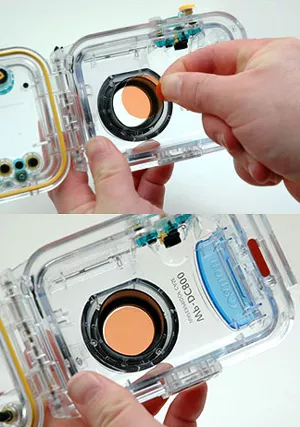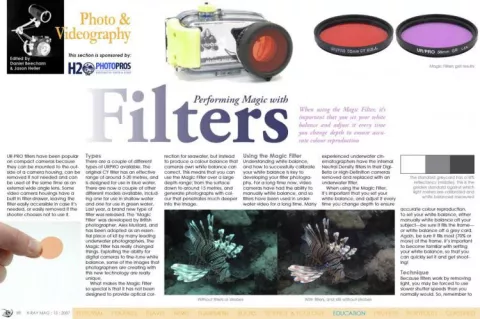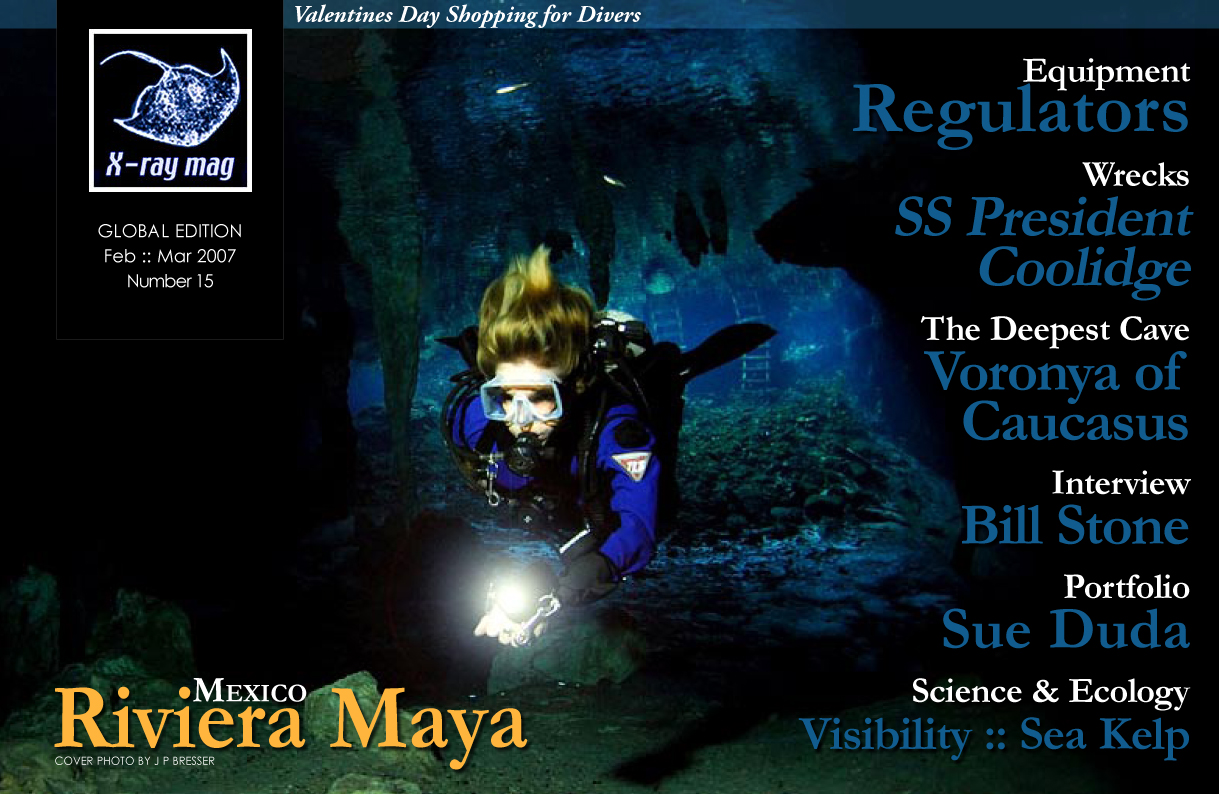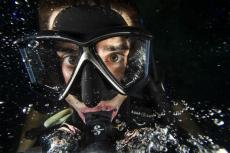UR-PRO filters have been popular on compact cameras because they can be mounted to the outside of a camera housing, can be removed if not needed and can be used at the same time as an external wide angle lens. Some video camera housings have a built in filter-drawer, leaving the filter easily accessible in case it’s needed, or easily removed if the shooter chooses not to use it.
Contributed by
There are a couple of different types of URPRO available. The original CY filter has an effective range of around 5-20 metres, and is designed for use in blue water. There are now a couple of other different models available, including one for use in shallow water and one for use in green water.
Last year, a brand new type of filter was released. The ‘Magic Filter’ was developed by British photographer, Alex Mustard, and has been adopted as an essential piece of kit by many leading underwater photographers. The Magic Filter has really changed things. Exploiting the ability for digital cameras to fine-tune white balance, some of the images that photographers are creating with this new technology are really unique.
What makes the Magic Filter so special is that it has not been designed to provide optical correction for seawater, but instead to produce a colour balance that cameras own white balance can correct. This means that you can use the Magic Filter over a large depth range; from the surface down to around 15 metres, and generate photographs with colour that penetrates much deeper into the image.
Using the Magic Filter
Understanding white balance, and how to successfully calibrate your white balance is key to developing your filter photography. For a long time now, video cameras have had the ability to manually white balance, and so filters have been used in underwater video for a long time. Many experienced underwater cinematographers have the internal Neutral Density filters in their Digi-Beta or High-Definition cameras removed and replaced with an underwater filter.
When using the Magic Filter, it’s important that you set your white balance, and adjust it every time you change depth to ensure accurate colour reproduction. To set your white balance, either manually white balance off your subject—be sure it fills the frame—or white balance off a grey card. Again, be sure it fills most (70% or more) of the frame. It’s important to become familiar with setting your white balance, so that you can quickly set it and get shooting!
Technique
Because filters work by removing light, you may be forced to use slower shutter speeds than you normally would. So, remember to concentrate on keeping your camera steady to get sharp images. If you find your shutter speed is dropping too low, you may need to up your ISO. Many digital cameras perform excellently at 200 or 400 ISO. Get to know your camera and the quality of the images at different ISO settings, so you can get to know how far you can push the ISO without losing quality.
Like shooting underwater video, it’s also important to shoot WITH the light when using filters. So, have the sun to your back. It’s also important to try and keep a downward angle, which will give you even lighting.
Post-processing
It’s possible to shoot images that you will be able to use straight out of your camera, but sometimes it may be worth performing slight adjustments to get the best out of your images. It’s also worth bearing in mind that you can perform RAW conversions using software such as Photoshop to play with settings including white balance. As a general rule, it best to try and get your white balance set during the dive. But when this is not possible—if you’re in a rush to capture a subject—bear in mind that you will be able to set it later.
The Limitations
It’s important to keep in mind the limitations of filter photography; bright sunny conditions are always required. So, obviously, filters won’t work at night! Also, the effectiveness of filters is very dependent on your depth. Any filter will have an optimum working depth. So, be sure the subject you’re planning to photograph will fit within this depth. If not, you may need to re-think your subject or your photographic approach!
The development of new technologies continues to revolutionize the way we shoot our underwater images, and the cost of underwater camera systems has made underwater photography available to everyone. With the development and refinement of techniques for filter photography, it’s easier than ever to get images you can be proud of. ■


























